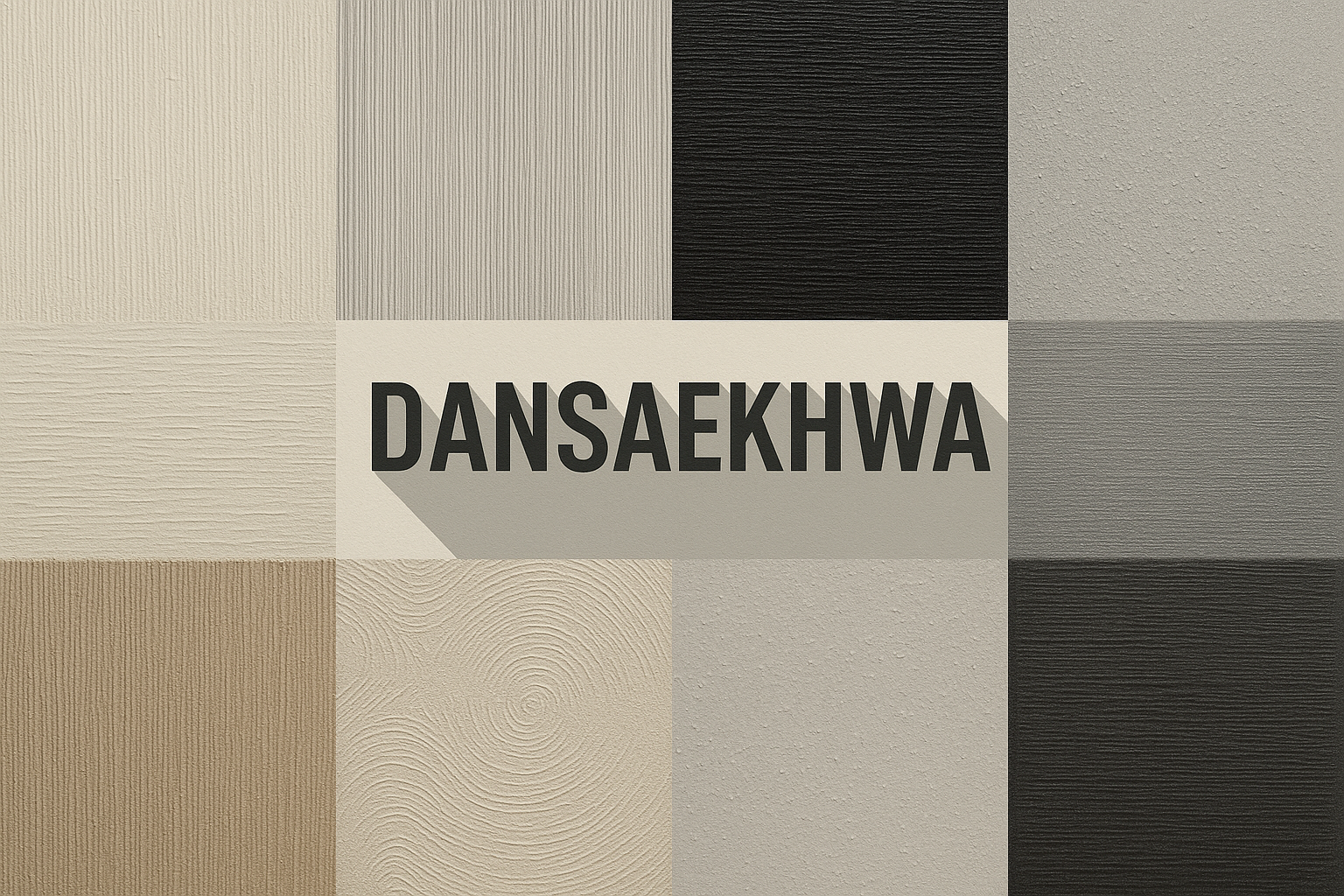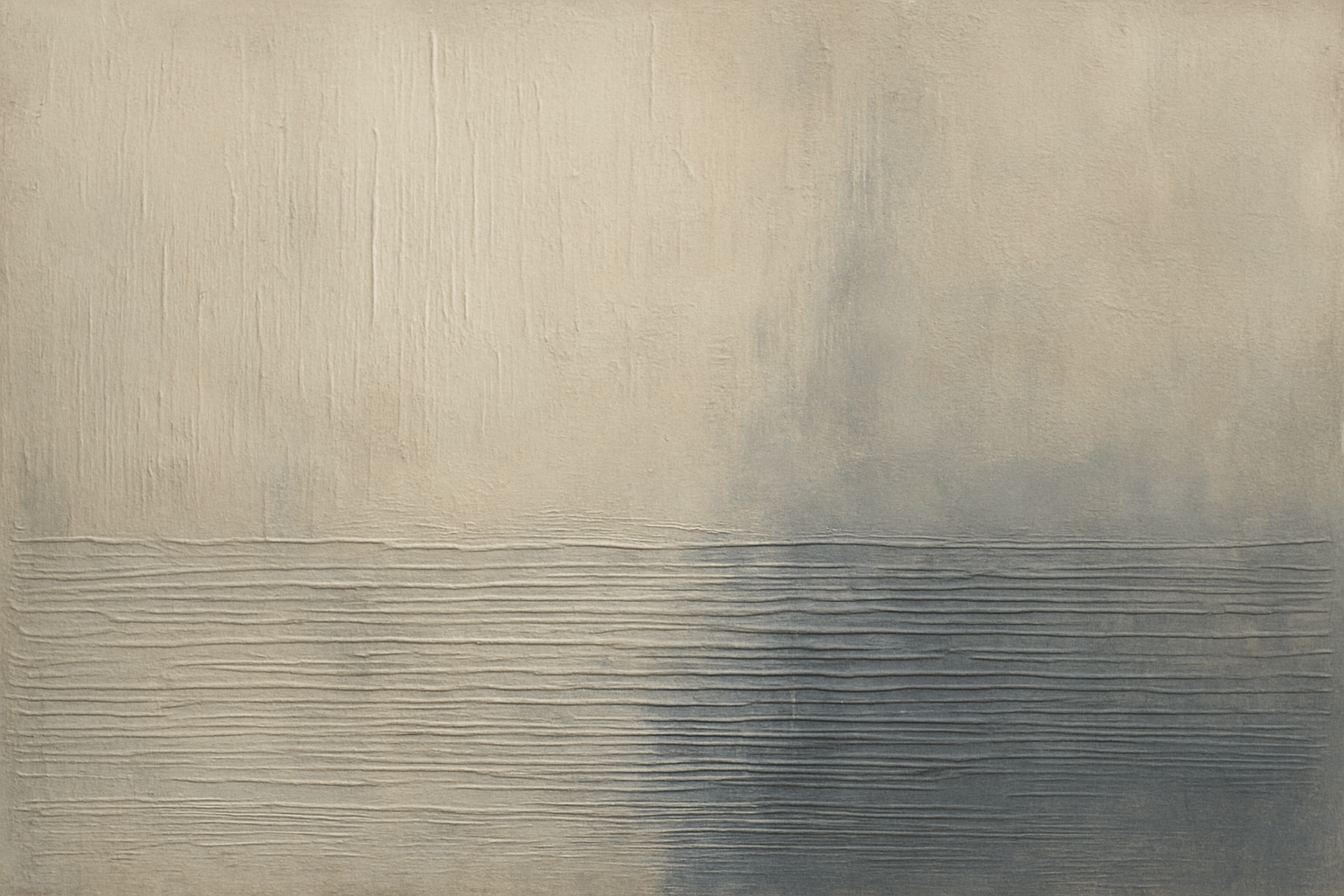
Dansaekhwa
The Dansaekhwa art style is characterized by a minimalistic approach to painting, often using a single color on a plain background. The focus is on the brushstrokes and the texture of the paint, rather than on the subject matter. This style is often associated with the Korean tradition of Zen Buddhism, which emphasizes simplicity and mindfulness.
AOI thinking about Dansaekhwa [+_~]-/
Overview and Quickfacts
Dansaekhwa is a Korean art movement characterized by monochrome painting and abstract, minimalistic compositions. The name “Dansaekhwa” literally means “monochrome painting” in Korean. The movement emerged in the 1970s as a reaction to the Western-influenced abstract expressionism that was dominant in Korea at the time. Dansaekhwa artists instead sought to create a uniquely Korean form of abstract art. Dansaekhwa artists typically use a single color in their paintings, often white or black. They apply paint to the canvas in a repetitive, rhythmic manner, often using their hands or rags instead of brushes. This results in a textured, meditative quality to the paintings. The compositions are often geometric and minimalistic, with a focus on the relationship between positive and negative space. Dansaekhwa has been influenced by traditional Korean aesthetics, as well as Western movements such as minimalism and monochrome painting. The movement has been championed by a number of Korean critics and curators, and has gained international recognition in recent years.
Can understand it also, as:
Korean monochrome painting
Categorize it as:
Impressionism, Modernism
.: Dreaming :.
holds a HAIKU for the art style
:. Thought is power .:
Detailed Description
Dansaekhwa is a form of Korean abstract painting that emphasizes minimalism and monochromatic colors. The term “dansaekhwa” literally means “monochrome painting” in Korean. The style developed in the 1970s as part of the Korean New Wave art movement. Dansaekhwa artists often use a variety of techniques to create their work, including staining, dripping, and rubbing. The resulting paintings are often characterized by a sense of calm and tranquility. Famous dansaekhwa artists include Park Seo-bo, Lee Ufan, and Kim Whanki. Park Seo-bo’s “Ecriture No. 8” (1984) is considered one of the most important works in the dansaekhwa style.
.. beep, beep, beep ..
<START OF TRANSMISSION>
1. Dansaekhwa is a Korean art movement that began in the 1970s. 2. It is characterized by a minimal, monochromatic aesthetic. 3. Dansaekhwa artists often use traditional Korean painting techniques, such as ink-and-wash painting and calligraphy. 4. The movement is named after the Korean word for "monochrome" or "ink wash" painting. 5. Dansaekhwa artists often work with a limited palette of colors, usually black, white, and shades of gray. 6. The focus of Dansaekhwa is on the process of creation, rather than the final product. 7. Dansaekhwa artists often use repetitive, meditative processes in their work. 8. The Dansaekhwa movement is sometimes referred to as the Korean version of minimalism. 9. The first generation of Dansaekhwa artists includes Park Seo-bo, Lee Ufan, and Chung Sang-hwa. 10. The second generation of Dansaekhwa artists includes Ha Chong-hyun, Kim Guiline, and Park Hyung-sik. 11. The third generation of Dansaekhwa artists includes Kim Yong-ik, Kwon Young-woo, and Lee Bul. 12. Dansaekhwa has been influenced by Western movements such as minimalism, monochrome painting, and conceptual art. 13. Dansaekhwa artists often use found objects and everyday materials in their work. 14. The Dansaekhwa movement has been described as "anti-art" due to its rejection of traditional aesthetics. 15. Dansaekhwa has been criticized for its lack of political engagement. 16. The Dansaekhwa movement has been praised for its focus on the meditative and spiritual aspects of art-making. 17. Dansaekhwa has been exhibited internationally, including at the Guggenheim Museum in New York and the Tate Modern in London. 18. The Dansaekhwa movement is still active today, with new generations of artists continuing to explore its possibilities. 19. Dansaekhwa is an important part of Korean contemporary art. 20. Dansaekhwa is a unique and influential art movement that continues to evolve.
<EOF>
.. robbel bob
Visual Examples from our image gallery
Coming soon, we are so slow .. might never come
Artists, Paintings, and more
(be aware, can be highly speculative)
Artists (be aware, speculation possible):
1. Park Seo-bo (b. 1931) 2. Lee Ufan (b. 1936) 3. Chung Sang-hwa (b. 1936) 4. Ha Chong-hyun (b. 1935) 5. Kim Tschang-yeul (b. 1929) 6. Yun Hyong-keun (b. 1928) 7. Kim Guiline (b. 1944) 8. Park Yong-woo (b. 1942) 9. Kwon Young-woo (b. 1943) 10. Lee Yong-baek (b. 1966) 11. Park Chan-gyeong (b. 1968) 12. Chung Sang-hwa (b. 1936) 13. Ha Chong-hyun (b. 1935) 14. Kim Tschang-yeul (b. 1929) 15. Yun Hyong-keun (b. 1928) 16. Kim Guiline (b. 1944) 17. Park Yong-woo (b. 1942) 18. Kwon Young-woo (b. 1943) 19. Lee Yong-baek (b. 1966) 20. Park Chan-gyeong (b. 1968) 21. Lee Ufan (b. 1936) 22. Chung Sang-hwa (b. 1936) 23. Ha Chong-hyun (b. 1935) 24. Kim Tschang-yeul (b. 1929) 25. Yun Hyong-keun (b. 1928) 26. Kim Guiline (b. 1944) 27. Park Yong-woo (b. 1942) 28. Kwon Young-woo (b. 1943) 29. Lee Yong-baek (b. 1966) 30. Park Chan-gyeong (b. 1968)
Artworks (be aware, speculation possible)
1. Park Seo-bo, Untitled, 1976 2. Kim Tschang-yeul, Water Drops, 1980 3. Chung Sang-hwa, Untitled, 1981 4. Lee Ufan, From Line, 1981 5. Park Seo-bo, Untitled, 1982 6. Kim Tschang-yeul, Water Drops on a Lotus Leaf, 1983 7. Chung Sang-hwa, Untitled, 1983 8. Lee Ufan, From Line, 1983 9. Park Seo-bo, Untitled, 1984 10. Kim Tschang-yeul, Water Drops, 1984 11. Chung Sang-hwa, Untitled, 1984 12. Lee Ufan, From Line, 1984 13. Park Seo-bo, Untitled, 1985 14. Kim Tschang-yeul, Water Drops, 1985 15. Chung Sang-hwa, Untitled, 1985 16. Lee Ufan, From Line, 1985 17. Park Seo-bo, Untitled, 1986 18. Kim Tschang-yeul, Water Drops, 1986 19. Chung Sang-hwa, Untitled, 1986 20. Lee Ufan, From Line, 1986 21. Park Seo-bo, Untitled, 1987 22. Kim Tschang-yeul, Water Drops, 1987 23. Chung Sang-hwa, Untitled, 1987 24. Lee Ufan, From Line, 1987 25. Park Seo-bo, Untitled, 1988 26. Kim Tschang-yeul, Water Drops, 1988 27. Chung Sang-hwa, Untitled, 1988 28. Lee Ufan, From Line, 1988 29. Park Seo-bo, Untitled, 1989 30. Kim Tschang-yeul, Water Drops, 1989
Epoch
The Dansaekhwa art movement began in the 1970s in Korea.
AI ART RESSOURCES (AKA, well Tools)
Helping tools -> predefined search links on other pages:










